Family: Rosaceae
Common name: Nootka rose
E-flora BC: http://linnet.geog.ubc.ca/Atlas/Atlas.aspx?sciname=Rosa%20nutkana
Wikipedia: https://en.wikipedia.org/wiki/Rosa_nutkana
The Nootka rose is common and abundant in our area and occurs in many spots, ranging from moist deep soils to dry meadows. In favorable sites it can grow wide and tall (~3 m), while in dry exposed sites it exists as foot-high plants.
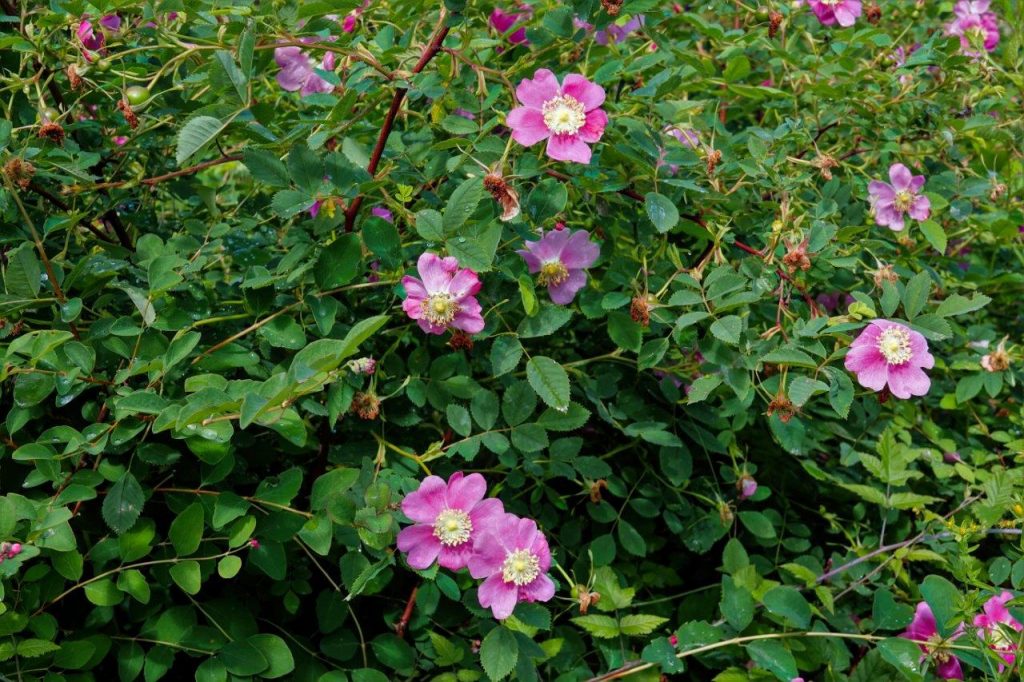
Like other roses, the Nootka rose has compound leaves, usually with 5-9 toothed-edge leaflets per leaf.
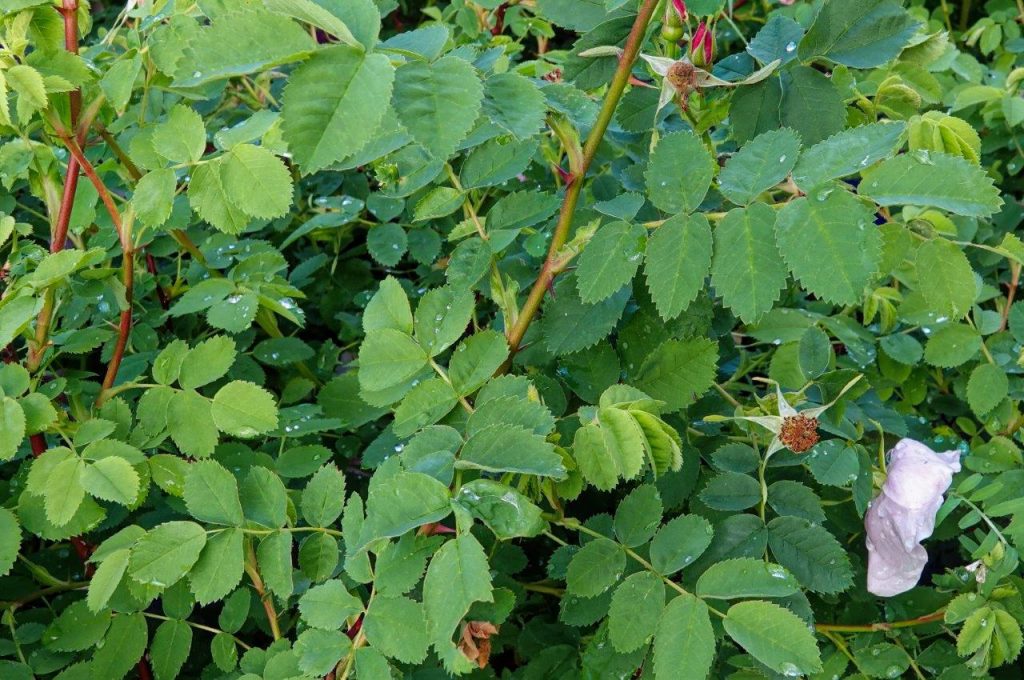
The stems of Nootka rose have prickles (the correct botanical term for the thorns of roses is ‘prickles’). The prickles occur in pairs just below the leaf node, and they’re more or less straight. Non-native roses in our area have curved or hooked prickles. Stems on very old plants can appear almost black.
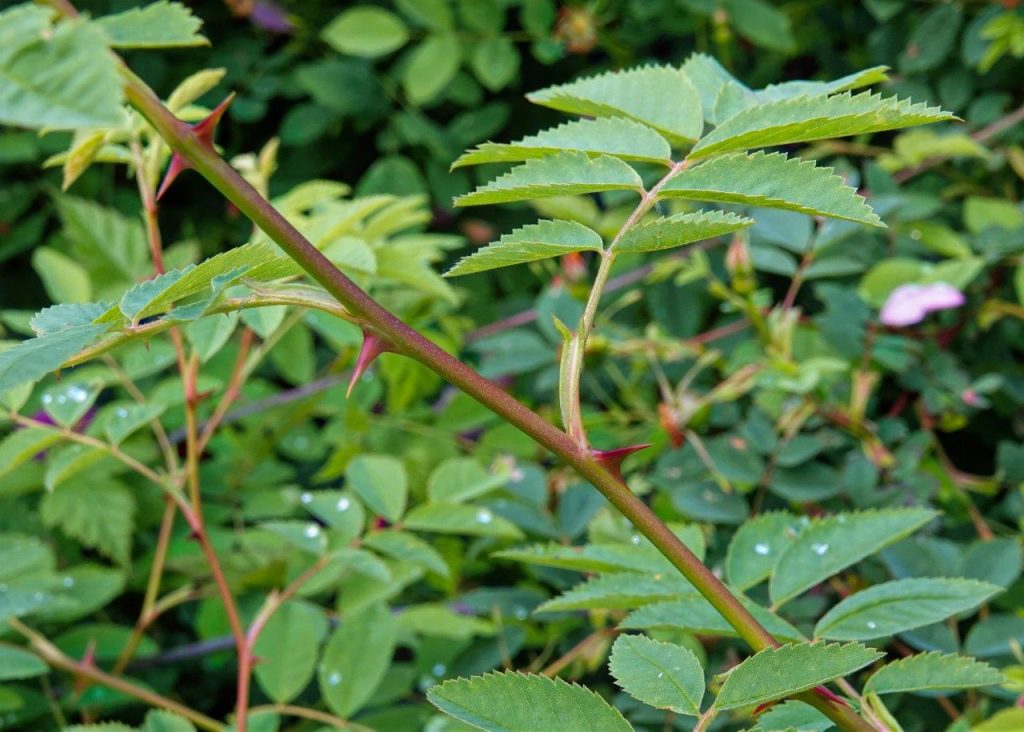
We’re all familial with the beautiful flower of roses. Like most wild roses, the Nootka rose has a whorl of five sepals, then five petals, numerous stamens and, in the center, the female ovary. Here’s a link to some nice photographs of a rose flower (not Nootka rose) showing the different floral organs relative to each other: http://murry-gans.blogspot.com/2016/06/roses-more-beautiful-up-close.html.
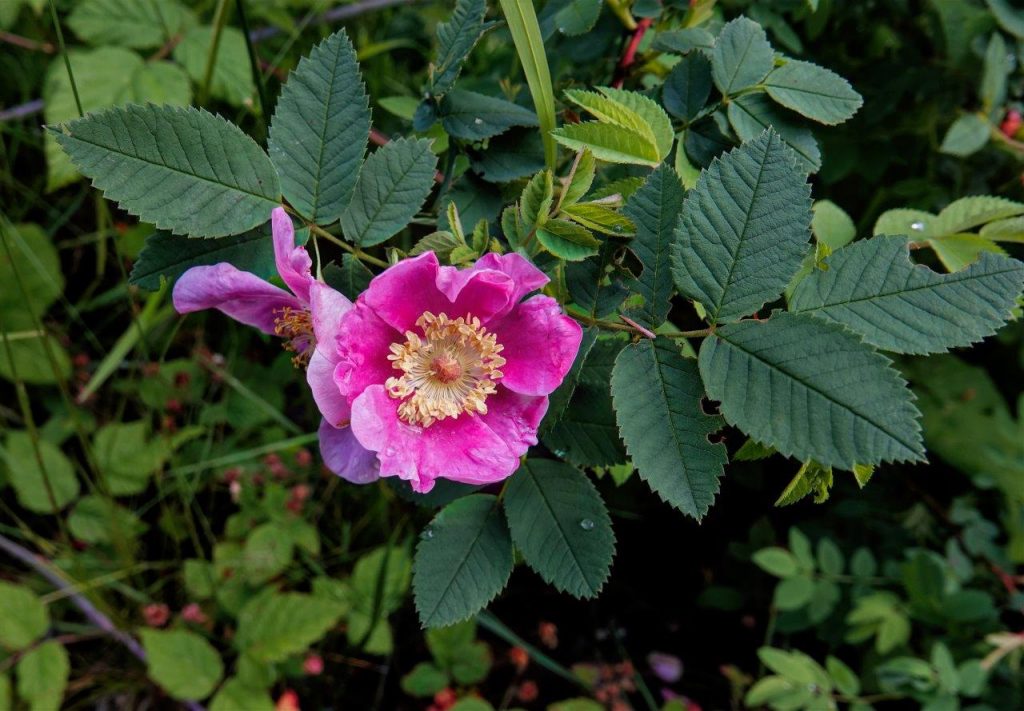
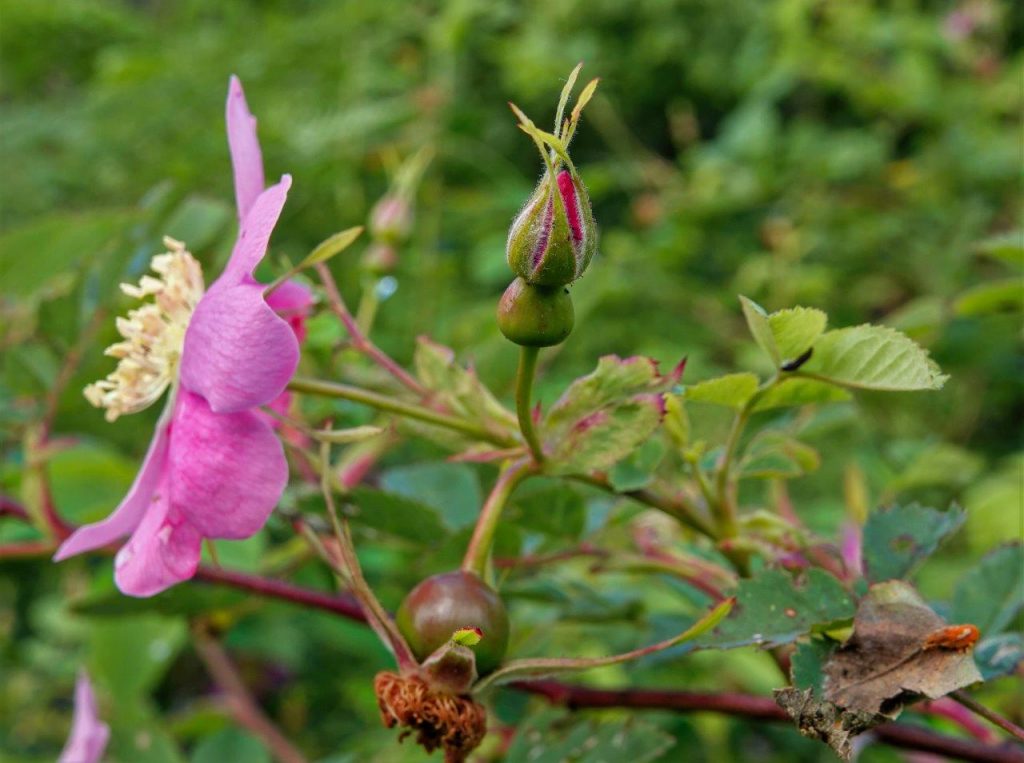
The fruits of roses are called ‘rose hips’. People around the world harvest and use rose hips for food and medicine. The seeds (‘achenes’) inside the fruit are covered in stiff hairs, and must be separated from the rose hip flesh before consumption. The fruit flesh is very high in vitamin C and carotenoids (the same orange compound that makes carrots orange).
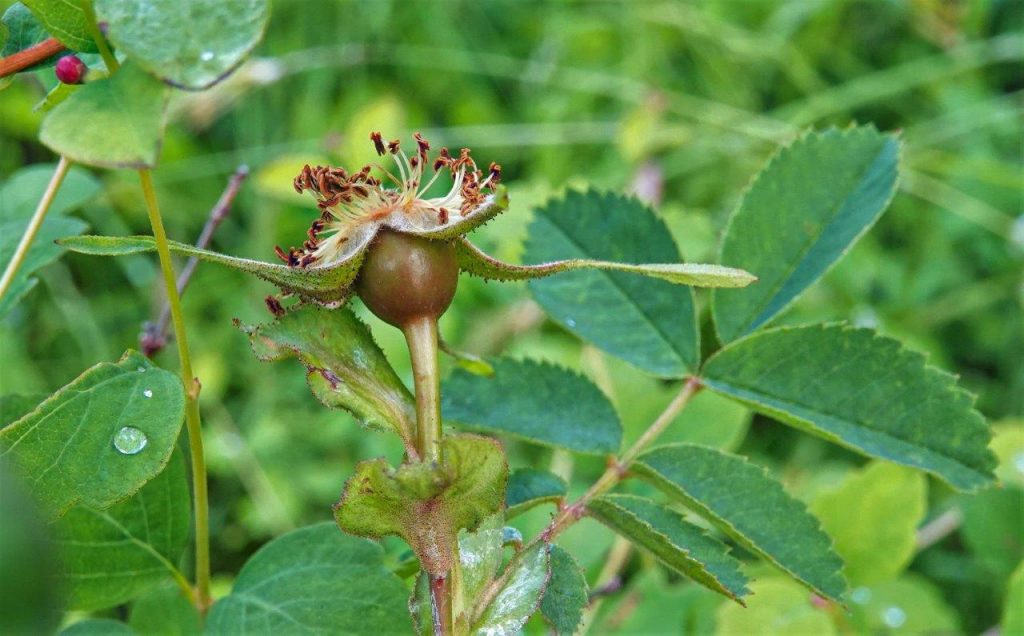
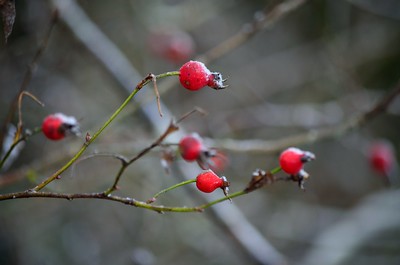
Nootka rose has many uses. Both the flowers and leaves are fragrant and can be used in teas and tonics. The leafy branches are used to protect and flavour foods during pit cooking, and there are many medicinal preparations made of different parts of the plant.